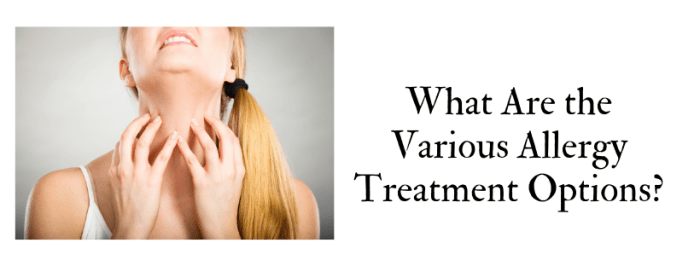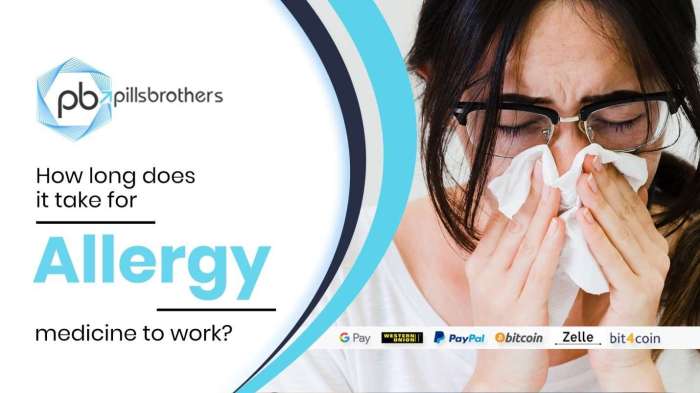In the realm of allergies, tip allergy therapy stands as a beacon of hope for those seeking relief from the discomfort and distress caused by allergic reactions to certain foods. Yet, for many individuals, the looming question of cost can overshadow the potential benefits of this life-changing treatment.
This comprehensive guide delves into the intricacies of tip allergy therapy costs without insurance, providing valuable insights into the financial implications and offering strategies for navigating the complexities of treatment expenses.
As we embark on this journey, we will explore the factors that influence cost variations, compare different treatment options and their associated expenses, and investigate financial assistance programs that can alleviate the financial burden for patients. Additionally, we will shed light on the impact of insurance coverage, out-of-pocket expenses, and payment plans, empowering individuals with the knowledge to make informed decisions regarding their treatment.
Overview of Tip Allergy Therapy Costs

The cost of tip allergy therapy without insurance can vary depending on several factors, including geographic location, clinic or provider fees, and the severity of the treatment required.
Generally, the cost of tip allergy therapy without insurance can range from $500 to $2,000 per session. The total cost of treatment will depend on the number of sessions required, which can vary from one to several sessions, depending on the severity of the allergy.
Factors Influencing Cost Variations
Several factors can influence the cost of tip allergy therapy without insurance, including:
- Geographic Location: The cost of tip allergy therapy can vary depending on the geographic location of the clinic or provider. In general, the cost of treatment is higher in urban areas compared to rural areas.
- Clinic or Provider Fees: The fees charged by the clinic or provider can also impact the cost of tip allergy therapy. Some clinics or providers may charge higher fees than others for the same services.
- Severity of Treatment: The severity of the allergy can also affect the cost of treatment. More severe allergies may require more sessions or more intensive treatment, which can increase the overall cost.
Treatment Options and Associated Costs

Treatment costs for tip allergy therapy can vary depending on the chosen approach, duration of treatment, and location. This section breaks down the costs associated with different treatment options and compares short-term versus long-term treatment plans.
Treatment Approaches and Costs
- Immunotherapy (Allergen Shots or Drops): Immunotherapy involves gradually introducing small doses of the allergen into the body to build tolerance. It can be administered through allergy shots or sublingual immunotherapy (allergen drops placed under the tongue). The cost of immunotherapy varies depending on the type and frequency of treatment, ranging from $1,000 to $5,000 per year. The treatment duration can span several years, making it a long-term commitment.
- Oral Medications: Oral medications like antihistamines and decongestants are commonly used to manage tip allergy symptoms. These medications are generally affordable, with costs ranging from $10 to $50 per month. However, they provide symptomatic relief and do not address the underlying allergy.
- Alternative Therapies: Some individuals may opt for alternative therapies like acupuncture, herbal remedies, or nasal irrigation. These treatments can vary in cost depending on the specific therapy and the practitioner’s fees. The cost of alternative therapies can range from $50 to $200 per session.
Short-Term vs. Long-Term Treatment Plans
The cost implications of short-term versus long-term treatment plans depend on the chosen treatment approach. Short-term treatment plans, such as using oral medications or alternative therapies, may provide immediate symptom relief but may not address the underlying allergy. These treatments may require ongoing use, leading to potentially higher long-term costs.Long-term
treatment plans, such as immunotherapy, aim to desensitize the immune system to the allergen, potentially leading to long-term symptom control or even remission. While the upfront costs of immunotherapy may be higher, it can result in cost savings in the long run by reducing the need for ongoing symptomatic treatments and improving overall quality of life.
Evaluating Financial Assistance Programs
Exploring financial assistance programs can help make tip allergy therapy more accessible. These programs provide financial support to eligible patients, easing the financial burden associated with treatment costs.
Researching Available Programs
Start by thoroughly researching available financial assistance programs. Reliable sources include:
- National Institute of Allergy and Infectious Diseases (NIAID)
- American Academy of Allergy, Asthma & Immunology (AAAAI)
- Patient advocacy organizations
- Review program guidelines and eligibility criteria.
- Check for income and residency requirements.
- Determine if your medical condition qualifies for assistance.
Application Process
Once you’ve identified suitable programs, initiate the application process. Common steps include:
- Completing an application form
- Providing supporting documentation (medical records, income verification)
- Submitting the application to the program administrator
- Follow program-specific instructions.
- Be prepared to provide additional information if requested.
- Respond promptly to any communication from the program.
Potential Cost Savings
Financial assistance programs can offer substantial cost savings, including:
- Reduced or eliminated treatment costs
- Coverage for medications and medical supplies
- Reimbursement for travel expenses
- Compare program benefits and coverage options.
- Estimate potential cost savings based on your individual circumstances.
- Consider the long-term financial impact of treatment.
Impact of Insurance Coverage

The cost of tip allergy therapy can vary significantly depending on whether you have insurance coverage or not. Insurance plans can provide financial assistance for the treatment, reducing the overall cost to the patient.
The extent of coverage offered by insurance plans can vary widely. Some plans may cover the entire cost of therapy, while others may only cover a portion of the cost. It is important to check with your insurance provider to determine the specific coverage for tip allergy therapy.
Examples of Insurance Plans
Some examples of insurance plans that typically cover tip allergy therapy include:
- Medicare
- Medicaid
- Private health insurance plans
The extent of coverage offered by these plans can vary depending on the specific plan and the individual’s coverage level.
Out-of-Pocket Expenses and Payment Plans

While insurance may cover a portion of tip allergy therapy costs, patients may still be responsible for out-of-pocket expenses. Understanding these expenses and exploring payment plan options can help manage the financial burden of treatment.
Co-pays and Deductibles
Co-pays and deductibles are common out-of-pocket expenses associated with tip allergy therapy. Co-pays are fixed amounts paid by the patient for each medical service or prescription, while deductibles are the total amount the patient must pay before insurance coverage begins.
Medication Costs
Medication costs can also contribute to out-of-pocket expenses. These costs vary depending on the type of medication prescribed and the patient’s insurance coverage. Some medications may require prior authorization from the insurance company before they are covered.
Payment Plan Options
To help patients manage out-of-pocket expenses, clinics or providers may offer payment plan options. These plans allow patients to spread the cost of treatment over a period of time, making it more manageable. Payment plans may have different terms and conditions, such as interest rates and fees, so it’s important to carefully review and understand the terms before enrolling.
Strategies for Reducing Treatment Costs

Tip allergy therapy can be expensive, especially for those without insurance coverage. However, there are strategies patients can employ to reduce the cost of treatment without compromising the quality of care.
Exploring these options can help make tip allergy therapy more accessible and affordable for individuals seeking relief from their symptoms.
Generic Medications
Generic medications are often significantly less expensive than brand-name medications. While they contain the same active ingredients and provide the same benefits, generic medications are not subject to the same marketing and advertising costs as brand-name medications, resulting in lower prices.
Patients should ask their doctor or pharmacist about generic alternatives to their prescribed medications. In many cases, generic medications can provide the same relief from symptoms at a fraction of the cost.
Clinical Trials
Clinical trials offer patients the opportunity to receive new and innovative treatments at little or no cost. These trials are conducted to evaluate the safety and effectiveness of new medications and treatments.
Patients who participate in clinical trials may have access to cutting-edge treatments that are not yet available to the general public. They may also receive regular monitoring and care from a team of medical professionals.
Academic and Public Health Centers
Academic and public health centers often offer lower prices for medical services, including tip allergy therapy. These centers are typically associated with universities or government agencies and may have lower overhead costs than private clinics or hospitals.
Patients should inquire about the cost of tip allergy therapy at academic or public health centers in their area. These centers may be able to provide the same quality of care at a lower cost.
Role of Support Groups and Resources

Navigating the financial aspects of tip allergy therapy can be daunting, and finding support and guidance can make a significant difference. Support groups and online communities provide a platform for patients to connect with others facing similar challenges, share experiences, and offer encouragement.
Support Groups and Online Communities
- Tip Allergy Support Group: This group offers a safe space for individuals with tip allergy to connect, share their experiences, and provide emotional support to one another. It is facilitated by trained professionals and provides a platform for members to discuss treatment options, coping mechanisms, and financial concerns.
- Allergy & Asthma Network: This organization offers a variety of resources and support for individuals with allergies and asthma, including tip allergy. They have a dedicated online forum where members can connect with others, ask questions, and share their experiences.
- American Academy of Allergy, Asthma & Immunology (AAAAI): The AAAAI provides a wealth of information and resources on tip allergy, including a directory of allergists and immunologists who specialize in treating this condition. They also have an online forum where members can connect with others and share their experiences.
Financial Assistance Programs and Resources
- Patient Assistance Programs: Many pharmaceutical companies offer patient assistance programs that provide financial assistance to individuals who cannot afford their medications. These programs may offer reduced-cost or free medications, co-pay assistance, and other forms of financial support.
- Government Assistance Programs: Government programs such as Medicare and Medicaid may provide coverage for tip allergy therapy. Additionally, some states have programs that provide financial assistance to individuals with chronic conditions, including tip allergy.
- Non-Profit Organizations: Several non-profit organizations provide financial assistance to individuals with chronic conditions. These organizations may offer grants, scholarships, or other forms of financial support to help cover the cost of treatment.
Long-Term Cost-Benefit Analysis
Analyzing the long-term cost-benefit ratio of tip allergy therapy is crucial in making informed decisions about treatment. Beyond the initial costs, it’s essential to consider the potential long-term benefits, including improved quality of life, reduced healthcare utilization, and savings on future medical expenses.
Improved Quality of Life
Successful tip allergy therapy can significantly improve a person’s quality of life. Reduced allergy symptoms can lead to better sleep, enhanced mood, and increased energy levels. This can have a positive impact on overall well-being, productivity, and relationships.
Reduced Healthcare Utilization
Effective tip allergy therapy can reduce the need for frequent doctor visits, emergency room visits, and hospitalizations. This can result in substantial savings on healthcare costs over time. Additionally, reduced allergy symptoms can lead to fewer missed work or school days, increasing productivity and income.
Potential Savings on Future Medical Expenses
By addressing the underlying causes of tip allergy, therapy can potentially prevent the development of more serious health conditions, such as asthma or chronic sinusitis. This can lead to long-term savings on medical expenses and reduce the risk of costly complications.
Weighing Initial Costs vs. Long-Term Benefits
While the initial cost of tip allergy therapy may appear high, it’s important to weigh these costs against the potential long-term benefits. The improved quality of life, reduced healthcare utilization, and savings on future medical expenses can often outweigh the initial investment.
Legal and Ethical Considerations

Tip allergy therapy, like any other medical treatment, raises legal and ethical considerations related to cost and access to care. These considerations include price transparency, insurance discrimination, and ensuring fair and equitable access to affordable therapy.
Price transparency is crucial for patients to make informed decisions about their healthcare. Regulatory bodies and government policies play a vital role in ensuring that the costs of tip allergy therapy are transparent and accessible to patients. This includes requiring healthcare providers to disclose pricing information clearly and upfront, allowing patients to compare costs and make informed choices about their treatment options.
Insurance Discrimination
Insurance discrimination is another ethical concern associated with the cost of tip allergy therapy. Some insurance companies may deny coverage for tip allergy therapy, deeming it experimental or unnecessary. This can lead to financial hardship for patients who rely on insurance to cover their medical expenses.
Regulatory bodies and government policies can address this issue by ensuring that insurance companies cover medically necessary treatments, including tip allergy therapy, without discrimination.
Access to Affordable Care
Ensuring fair and equitable access to affordable tip allergy therapy is a significant ethical consideration. The high cost of therapy can make it inaccessible for many patients, leading to disparities in healthcare outcomes. Government policies and programs can play a crucial role in addressing this issue by providing financial assistance to patients who cannot afford the full cost of therapy.
Additionally, promoting research and development of new and more affordable treatment options can help reduce the overall cost of tip allergy therapy, making it more accessible to patients in need.
Emerging Trends and Innovations
The landscape of tip allergy therapy is constantly evolving, driven by technological advancements, research breakthroughs, and changing healthcare practices. These emerging trends and innovations have the potential to transform the cost and accessibility of care for individuals with tip allergies.
One significant trend is the rise of telemedicine, which allows patients to consult with healthcare providers remotely using video conferencing or other digital platforms. Telemedicine can reduce the need for in-person visits, potentially lowering the overall cost of care, especially for patients in rural or underserved areas.
Personalized Medicine
Personalized medicine, also known as precision medicine, involves tailoring treatments to individual patients based on their genetic makeup, lifestyle, and other factors. This approach can lead to more effective and targeted therapies, potentially reducing the duration and cost of treatment.
Additionally, personalized medicine may enable the identification of individuals at higher risk of developing tip allergies, allowing for early intervention and preventive measures.
Novel Treatment Approaches
Ongoing research is exploring novel treatment approaches for tip allergies, such as immunotherapy, which aims to desensitize the immune system to the allergens that trigger symptoms. If successful, immunotherapy could potentially provide a long-term solution for tip allergies, reducing the need for ongoing medications or treatments.
The potential cost implications of these advancements are multifaceted. While some innovations, such as telemedicine, may reduce the overall cost of care, others, such as personalized medicine and novel treatments, may initially be more expensive. However, as these technologies become more widely adopted and refined, their costs may decrease over time.
The impact of these advancements on patient access to affordable care is also a critical consideration. Telemedicine can improve access to care for individuals in remote or underserved areas, but it may also exacerbate disparities for those without adequate internet connectivity or technological literacy.
Similarly, personalized medicine and novel treatments may be initially inaccessible for some patients due to high costs. Therefore, it is essential to address these potential barriers and ensure that these advancements benefit all patients, regardless of their socioeconomic status or location.
Final Summary

The cost of tip allergy therapy without insurance can vary widely depending on several factors, including geographic location, treatment severity, and the chosen treatment approach. However, with careful planning, research, and utilization of available resources, patients can navigate the financial aspects of tip allergy therapy and reap the benefits of improved quality of life and reduced healthcare utilization in the long run.
Questions and Answers
What factors influence the cost of tip allergy therapy without insurance?
The cost of tip allergy therapy without insurance is influenced by factors such as geographic location, clinic or provider fees, treatment severity, and the specific treatment approach selected.
What are the different treatment options for tip allergy therapy?
Tip allergy therapy commonly involves immunotherapy (allergen shots or drops), oral medications, and alternative therapies. Each approach carries its own cost implications, and the choice of treatment depends on individual needs and preferences.
Are there financial assistance programs available for tip allergy therapy?
Yes, there are financial assistance programs and grants available to patients seeking tip allergy therapy. These programs may have eligibility criteria and application processes, but they can provide significant cost savings for qualified individuals.
How does insurance coverage impact the cost of tip allergy therapy?
Insurance coverage can significantly reduce the cost of tip allergy therapy. The extent of coverage varies depending on the insurance plan, and patients should check with their insurance provider to determine their coverage details.
What are some strategies for reducing the cost of tip allergy therapy without compromising quality of care?
Strategies for reducing the cost of tip allergy therapy without compromising quality of care include using generic medications, participating in clinical trials, and seeking treatment at academic or public health centers.



